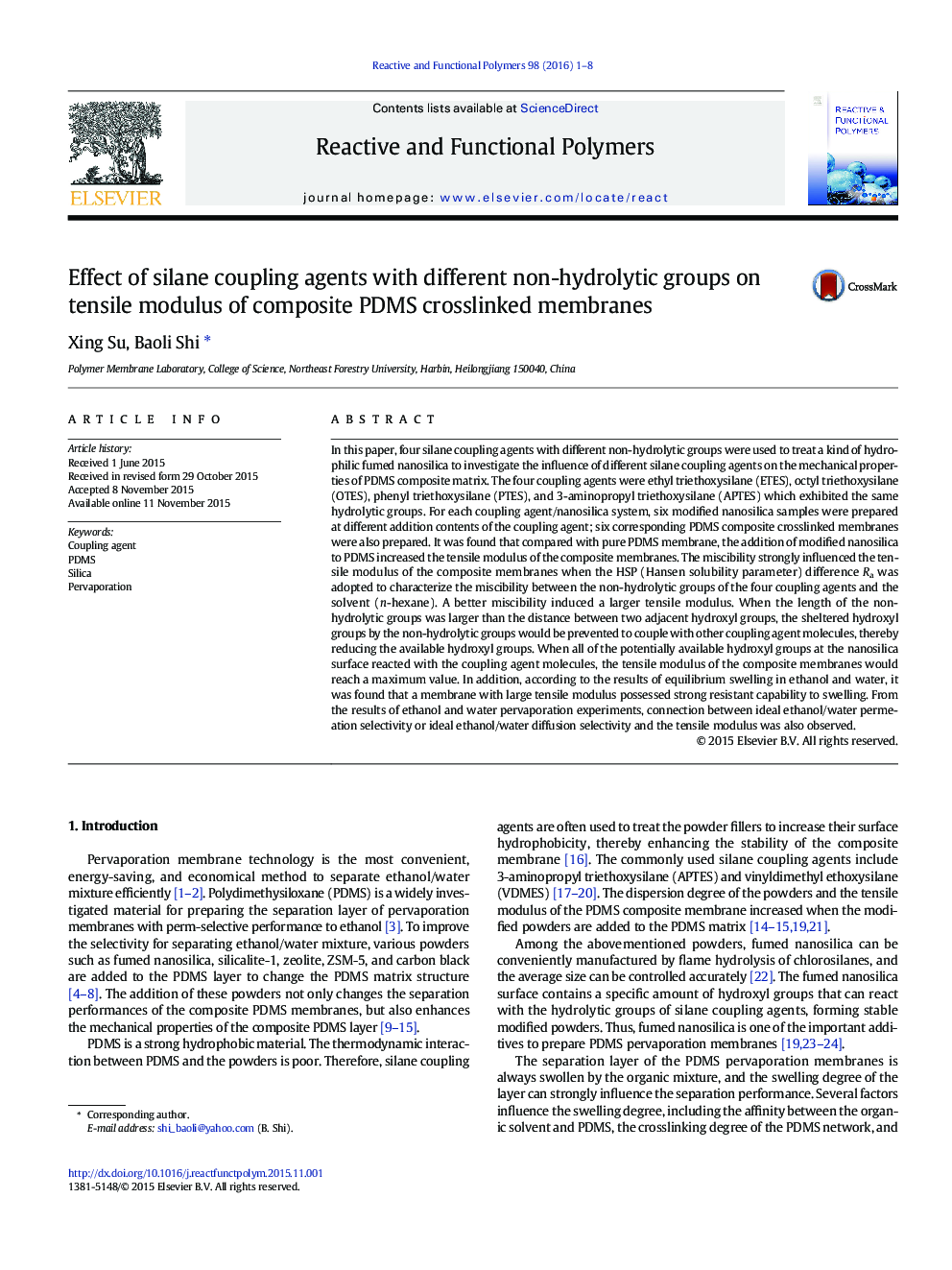| کد مقاله | کد نشریه | سال انتشار | مقاله انگلیسی | نسخه تمام متن |
|---|---|---|---|---|
| 5209695 | 1503063 | 2016 | 8 صفحه PDF | دانلود رایگان |
عنوان انگلیسی مقاله ISI
Effect of silane coupling agents with different non-hydrolytic groups on tensile modulus of composite PDMS crosslinked membranes
دانلود مقاله + سفارش ترجمه
دانلود مقاله ISI انگلیسی
رایگان برای ایرانیان
موضوعات مرتبط
مهندسی و علوم پایه
شیمی
شیمی آلی
پیش نمایش صفحه اول مقاله

چکیده انگلیسی
In this paper, four silane coupling agents with different non-hydrolytic groups were used to treat a kind of hydrophilic fumed nanosilica to investigate the influence of different silane coupling agents on the mechanical properties of PDMS composite matrix. The four coupling agents were ethyl triethoxysilane (ETES), octyl triethoxysilane (OTES), phenyl triethoxysilane (PTES), and 3-aminopropyl triethoxysilane (APTES) which exhibited the same hydrolytic groups. For each coupling agent/nanosilica system, six modified nanosilica samples were prepared at different addition contents of the coupling agent; six corresponding PDMS composite crosslinked membranes were also prepared. It was found that compared with pure PDMS membrane, the addition of modified nanosilica to PDMS increased the tensile modulus of the composite membranes. The miscibility strongly influenced the tensile modulus of the composite membranes when the HSP (Hansen solubility parameter) difference Ra was adopted to characterize the miscibility between the non-hydrolytic groups of the four coupling agents and the solvent (n-hexane). A better miscibility induced a larger tensile modulus. When the length of the non-hydrolytic groups was larger than the distance between two adjacent hydroxyl groups, the sheltered hydroxyl groups by the non-hydrolytic groups would be prevented to couple with other coupling agent molecules, thereby reducing the available hydroxyl groups. When all of the potentially available hydroxyl groups at the nanosilica surface reacted with the coupling agent molecules, the tensile modulus of the composite membranes would reach a maximum value. In addition, according to the results of equilibrium swelling in ethanol and water, it was found that a membrane with large tensile modulus possessed strong resistant capability to swelling. From the results of ethanol and water pervaporation experiments, connection between ideal ethanol/water permeation selectivity or ideal ethanol/water diffusion selectivity and the tensile modulus was also observed.
ناشر
Database: Elsevier - ScienceDirect (ساینس دایرکت)
Journal: Reactive and Functional Polymers - Volume 98, January 2016, Pages 1-8
Journal: Reactive and Functional Polymers - Volume 98, January 2016, Pages 1-8
نویسندگان
Xing Su, Baoli Shi,